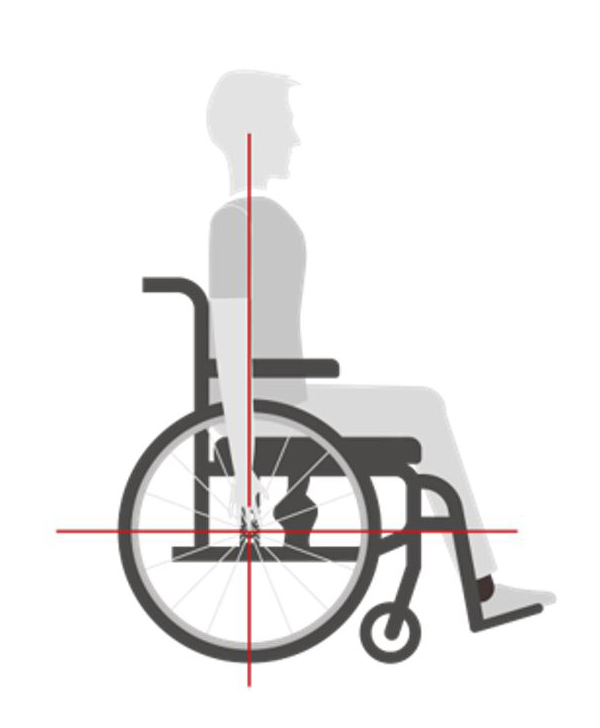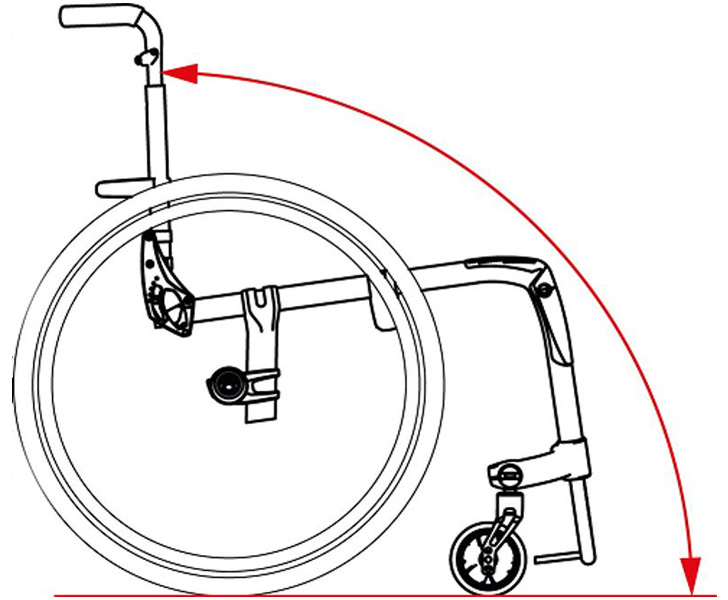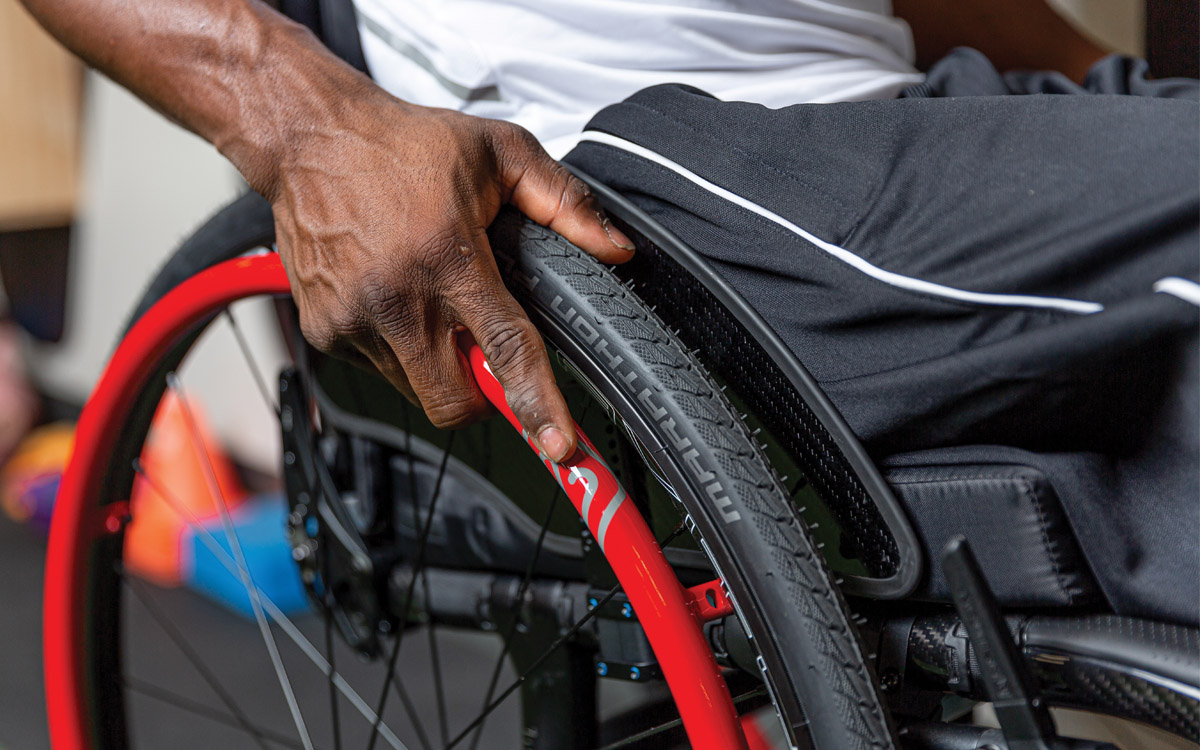The Need-To-Knows of Becoming a Propulsion Efficiency Pro
The intention of a custom-fit ultralightweight manual wheelchair is propulsion efficiency. The mode of propulsion can be done by hand, by the lower extremities, or a combination of both.
The intention of a custom-fit ultralightweight manual wheelchair is propulsion efficiency. The mode of propulsion can be done by hand, by the lower extremities, or a combination of both.
No matter the power source, propulsion efficiency is maximized by the client’s ability to propel throughout their day in both linear and stop-and-go propulsion patterns. One of our previous blogs discusses this topic, specifically regarding upper extremity users (Click here to read it). Whether you are evaluating for a brand-new wheelchair or can adjust the client’s current system, we will discuss a few ways that you can positively affect the efficiency of propulsion and overall client health.
Certain ultralightweight wheelchair frame styles will behave inherently more efficiently than others. Rigid frames are designed to be more efficient than folding frames. Rigid frame designs aim to put more of the client’s energy into propulsion, creating an overall more efficient system. Conversely, due to the construction and connecting hardware of a folding frame wheelchair, propulsion efficiency is often lost because of the crossbrace. When considering foot propulsion, the more likely frame option is a folding frame design to enable the client to reach the ground without a one-piece, rigid footrest in the way. Suppose a folding frame is better for the client’s propulsion style or environment. In that case, there are ways manufacturers have engineered folding wheelchairs to be more “rigid” and perform more efficiently. Learn more about Motion Composites’ flagship Helio folding wheelchair design here.
One could argue that every component selected on an ultralightweight manual wheelchair order form is essential to achieve a perfectly fit wheelchair. But what if you encounter a client who cannot get a new wheelchair immediately? Does their current wheelchair have some adjustability? No matter the situation, let’s discuss two key configuration details that can be implemented to impact propulsion efficiency.
Adjusting a client’s position between the rear wheels is how we can impact the center of mass of the wheelchair system. This positioning affects the efficiency of the system, as well as the body mechanics of the upper extremities with propulsion. Both aspects are key to impacting the efficiency of propulsion. This also sets the client up for good body mechanics and for upper extremity and shoulder preservation!
Center of mass can be difficult to conceptualize from written text and is often easier to visualize when looking at a graphic from a side view. Based on physics, it is more efficient to have more mass over the drive wheel (the rear wheel in a manual wheelchair set-up). 2 In the wheelchair world, this is done by adjusting the rear axle plate in both horizontal and vertical directions. The client is positioned deeper between the rear wheels as the axle moves vertically. This aids with upper extremity access to the handrims and rear seat to floor height for pelvic positioning. As the axle moves horizontally, the client can have more or less of their weight over the rear wheels. The more weight over the rear wheel, the better maneuverability. A quick way to gauge a good starting position of the rear wheel is to have the center of the wheel at or in front of the shoulder, with the middle finger at the center axle. From here, you can move the rear wheel forward (horizontally) to increase efficiency or more rearward for stability, understanding it is a give and take between these two principles.

Additionally, research shows that clients use many stop-and-go actions throughout the day instead of linear movement. 5 This requires them to repeatedly overcome inertia to initiate movement. Throughout thousands of pushes a day, over many years of wheelchair use, positioning between the rear wheels is imperative to avoid irreparable damage to the structure of the shoulder. Something as simple as reassessing the rear wheel position at delivery is an important step in maximizing propulsion efficiency and preventing fatigue and injury. Therefore, it is crucial that clinicians, mobility specialists, and suppliers play a collaborative role in the process of obtaining a wheelchair to ensure that clients are genuinely receiving the perfect chair.

The angle of the back canes to the wheelchair side frame is another configuration detail that can be selected when completing a new order form or adjusted if the hardware allows. Adjusting this angle affects weight distribution and center of mass (see above), pelvic positioning, access to the environment, balance, etc. To make things even more complicated, there is always a cause-and-effect relationship when you adjust this angle. For example, if you open the back angle, the client may feel more comfortable and balanced with the additional trunk support from gravity. However, they may now be unable to lean far enough forward to reach the sink handle. The open angle can also cause adverse effects on posture if the bony anatomy of the pelvis is not adequately supported with a backrest and contouring of the cushion. A closed angle allows for a more upright trunk, potentially giving better access to the environment, but decreases trunk balance. This is when it becomes helpful to have the adjustability built into the wheelchair and back support to make multiple configuration adjustments in these cause-and-effect scenarios. You may be starting to realize that one perfect wheelchair configuration does not fill all. Every client will have different postural, environmental, and propulsion needs, and you may frequently find yourself adjusting the back angle and axle position together to meet them.
Based on the current evidence-based research on weight and propulsion efficiency, lightweight wheelchairs are inherently more efficient than heavier options. Propulsion efficiency can be maximized through parts and accessories that the client uses to propel the chair. However, with seating and accessories, it is important to consider how much weight this adds to the wheelchair. Weight also becomes very important when lifting the wheelchair for the client or caregiver.
Ask yourself, “Is there a way to add this accessory with little weight costs while still getting an exceptional outcome?” Weigh the pros and cons of each accessory selection to make a real difference in the client’s quality of life.
The Cushion and Back Support:
Cushions and solid back supports are designed to capture the pelvic anatomy to support both lower extremities and trunk positioning in the wheelchair. Proper Posterior Superior Iliac Spine (PSIS) support in both static sitting and with dynamic activities such as Activities of Daily Living (ADL) and propulsion is key for successful positioning throughout the day. Suppose you configure a wheelchair for optimal propulsion efficiency while the client is at rest. In that case, once they begin to propel or maneuver around the kitchen, their seating does not properly support their posture, and the configuration is now not doing its job. This goes for both upper and lower extremity propulsion. Pairing the cushion with the correct seat slope, back angle, and rear wheel position will ensure optimal propulsion efficiency. A quick note for lower extremity propellers: It is important to have zero slope or even an anterior tilt wedge to properly support the pelvis. This will prevent the client from pulling into a posterior pelvic tilt during propulsion and increase weight bearing through their feet, which is the key to making proper contact with the ground. 1
Tires have been studied and are undoubtedly one of the most important choices that affect propulsion efficiency. The research tells us that pneumatic (air) tires are the lightest and most efficient, while pneumatic with airless inserts are the heaviest and most inefficient option. 5 Weight and friction play significant roles in these studies, but when deciding for the client, their lifestyle and environment will ultimately help make the decision. 3
Handrims have also been researched, and results show that improved body mechanics and ergonomic style handrims can improve the grip and protect hand function over time. 4 With a more natural grip, it can positively impact propulsion efficiency. Handrims with high friction coatings can also positively impact those requiring additional grip help. Adding this feature will improve contact with the handrim and distance with each push stroke. Check out Motion Composites’ ergonomic and high friction handrim options (Check our Newton Air Grip Handrims).
For some clients, a beneficial way to improve efficiency during manual wheelchair propulsion is by adding a power assist device. If appropriate for the client, it can enable them to propel farther distances with less push strokes/less energy exertion.
Education is another significant piece of improving propulsion efficiency. Please take a look at our previous blog to view the different types of push strokes and when to optimally utilize them (Click here to read it).
Learning to be an effective communicator will be essential in providing successful education. Make sure to focus on push stroke education during therapy sessions and at follow-up appointments after delivery. Having the client show you their propulsion in their home environment can be even more helpful. Observe their posture, shoulder movements, and hand placement. Teach the clients the dangers of poor propulsion habits and how small, seemingly insignificant changes can make a world of difference in maintaining independence throughout their lifetime.
To maximize propulsion, consider wheelchair configuration, accessory options, and propulsion skills. When it comes to manual wheelchair propulsion, it’s not only about going farther and faster, but also about injury prevention. Due to years of transfers, pressure reliefs, and propulsion, shoulder injuries can happen. The goal of a wheelchair prescription is to maximize function, minimize fatigue, delay pain and dysfunction, and maximize quality of life. Support your clients’ goals with highly adjustable, ultralightweight wheelchairs that can be dialed in to meet their specific needs.
